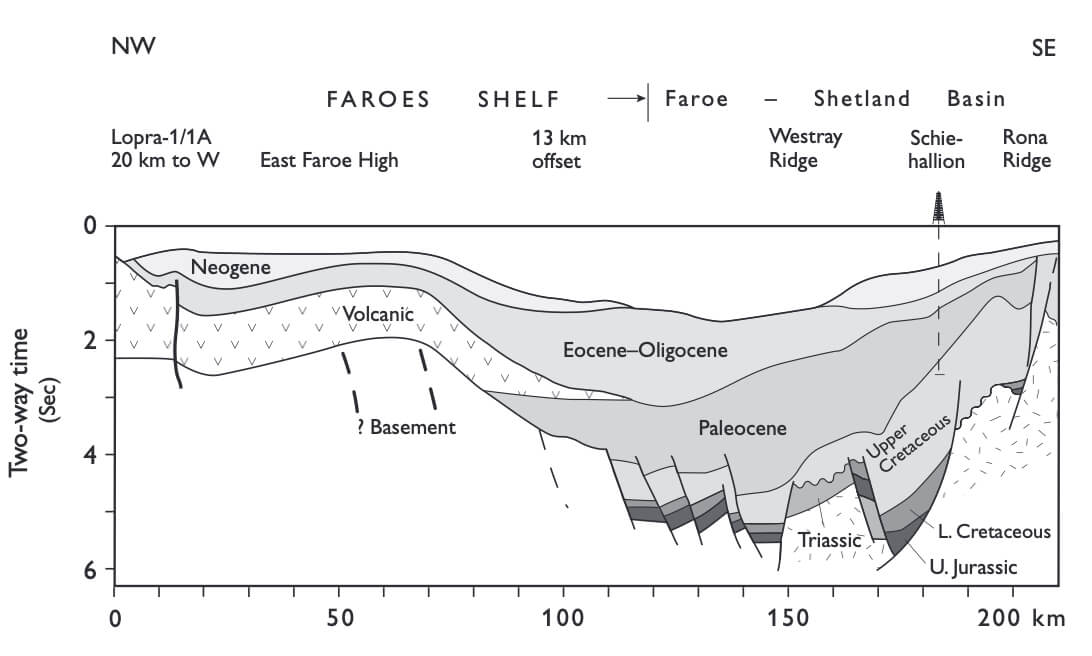
How to Cite
Share
Abstract
Hydrocarbon gases were monitored in the drilling fluid during deepening of the Lopra-1 well from 2178–3565 m, in which thermogenic, methane-rich gases had been found previously. The mud gas concentration, up to 105 ppm of methane, was generally higher in the hyaloclastite sequence, 2470 m – terminal depth (TD), than in the overlying lavas of the lower basalt formation. The highest concentrations of mud gas in the lower basalt formation were associated with the more porous tuffaceous zones, whereas no simple relationship could be established between measured mud gas concentrations and porosity of the hyaloclastic rocks, which showed less marked porosity variations than the lavas. Chemical (C2+ < 1%) and isotopic (δ13C1: –34 to –39‰) compositions of seven samples of mud gas collected at peak gas concentrations between 2657 m and 3442 m compare well with those of the hydrocarbon gases which had been seeping more or less continuously into the existing well since 1983, suggesting a common origin of the gases. Headspace methane concentrations measured in 135 canned samples of cuttings were scattered between 10 ppm and 6 × 103 ppm, with the exception of six samples from a short interval, 2685– 2745 m, which showed consistently high values > 104 ppm. No particularly gas-rich zones were indicated, however, by the mud gas, nor was any significant change in lithology noted for this interval. It is possible that the technique of turbo-drilling, that had been attempted over a short interval, 2657– 2675 m prior to collection of the high-level methane samples, may have caused enhanced degassing due to the very fine cuttings produced. Chemical and isotopic composition of headspace gas and mud gas indicated the same type of gas throughout the well, although headspace methane tended to be more enriched with respect to the 13C isotope. The origin of the Lopra-1 gas is discussed in the light of recent information obtained from source rock studies of central East Greenland and the Faroe–Shetland Basin.
How to Cite
Share
Downloads
Editors: James A. Chalmers and Regin Waagstein
The Faroe Islands in the northern North Altantic consist primarily of Palaeogene eruptive volcanic rocks. Two research boreholes were drilled in 1980 and 1981 on the islands, the deeper of which, Lopra-1, extended 2 km into the unexposed part of the volcanic succession.
Exploration for [...]










